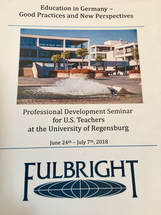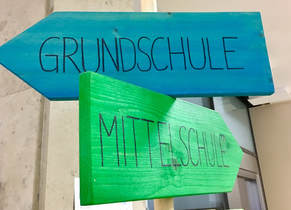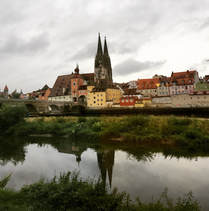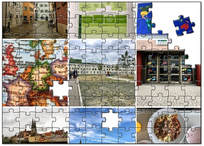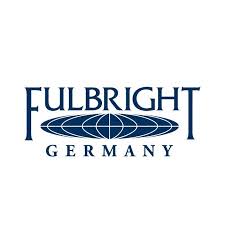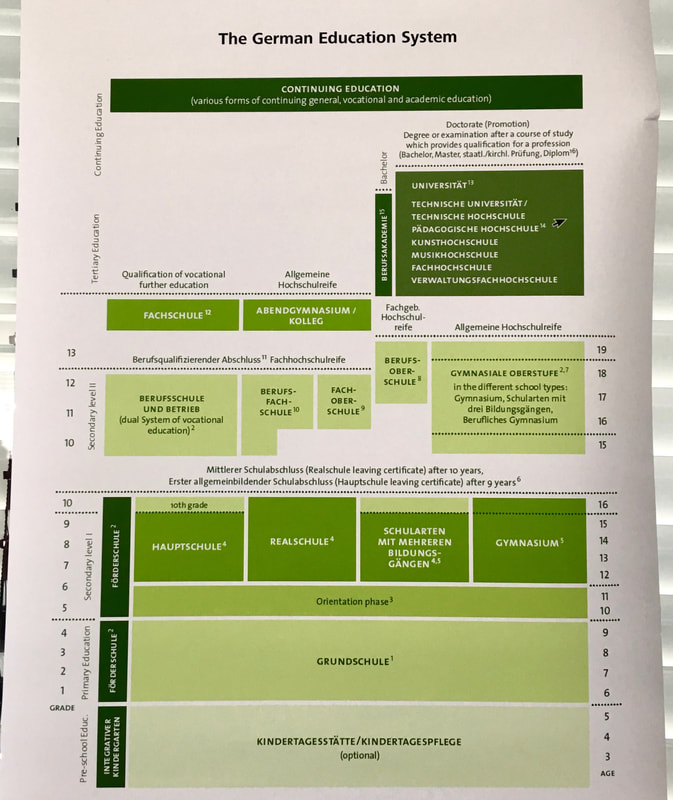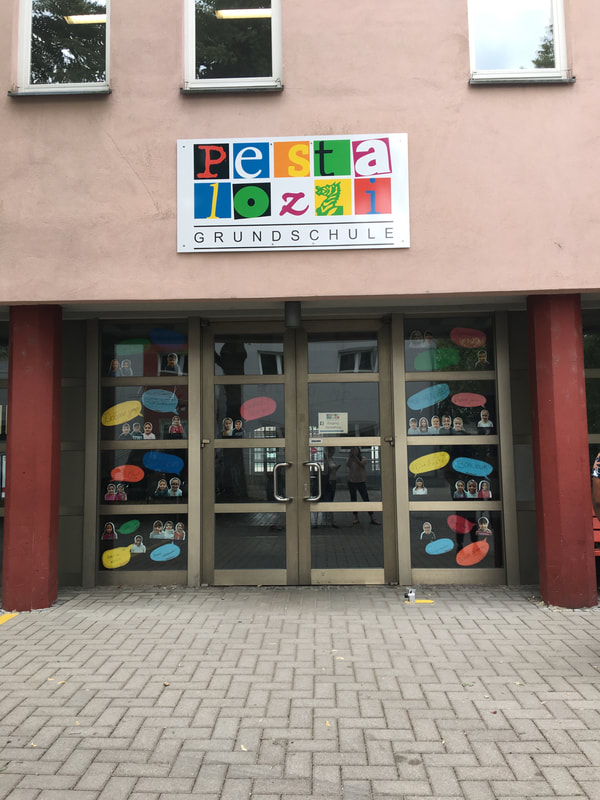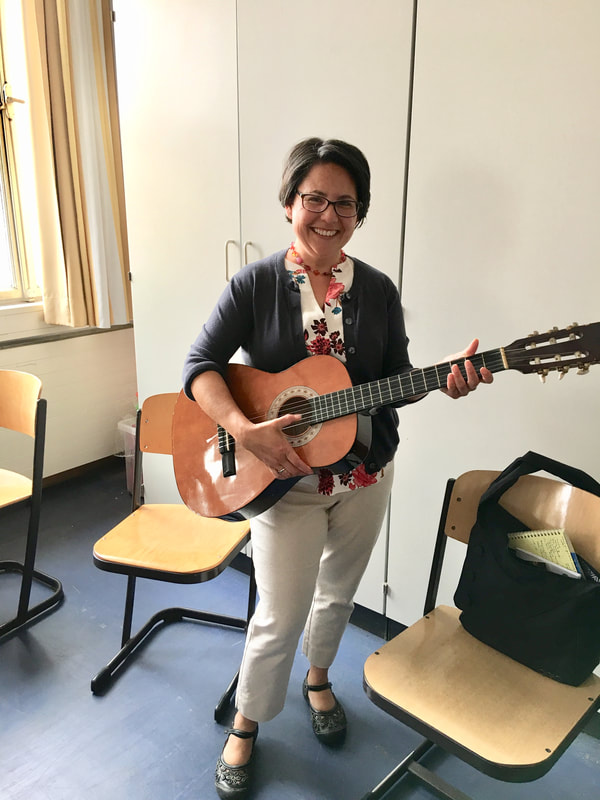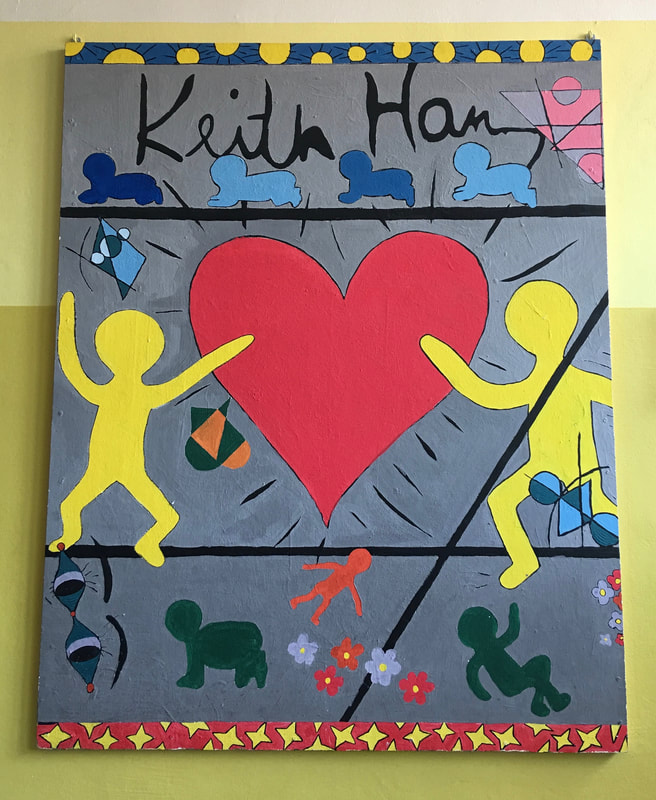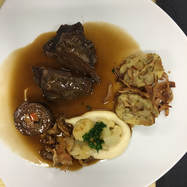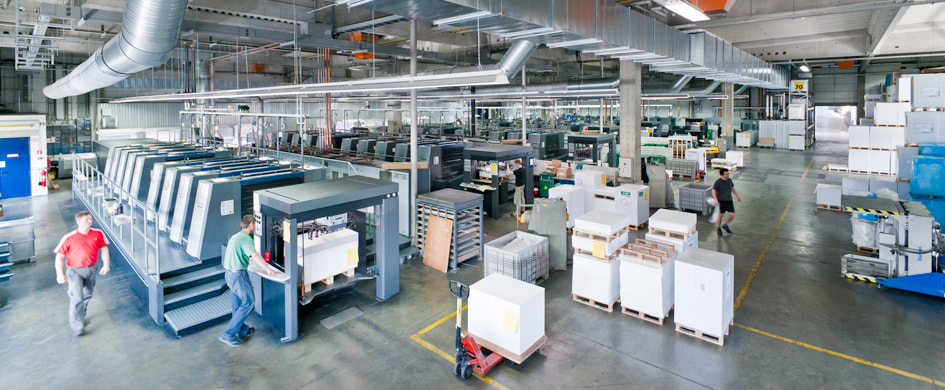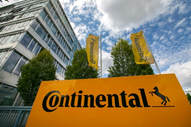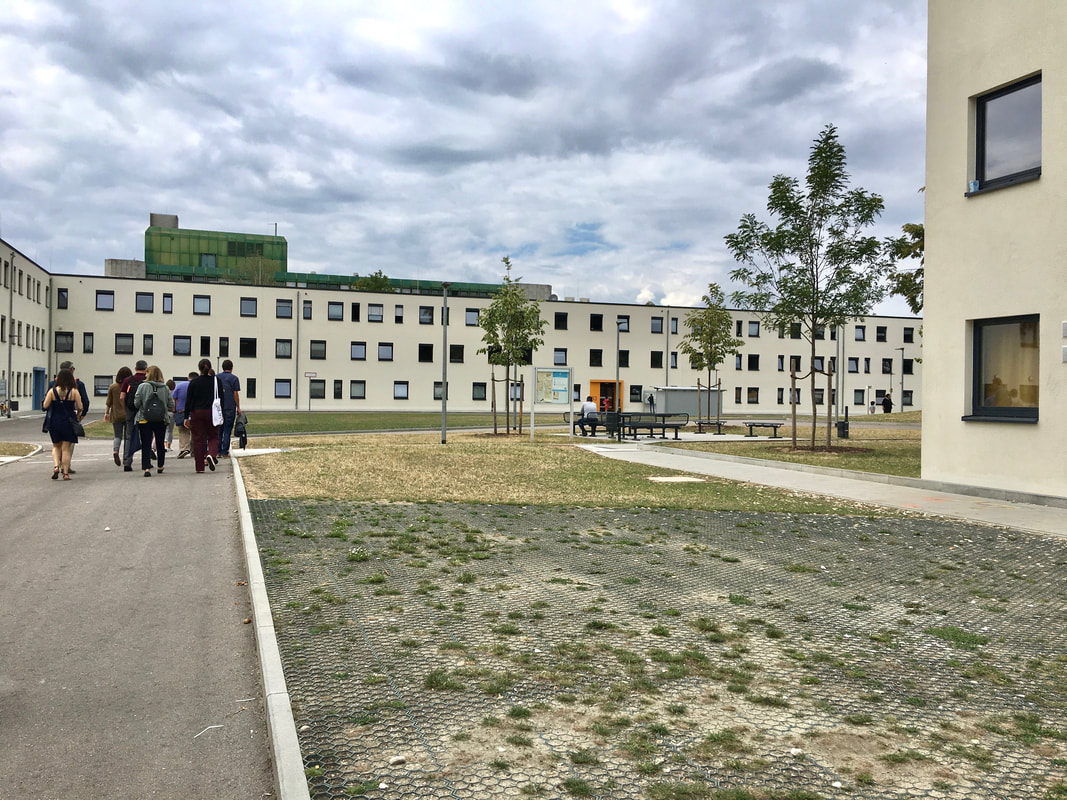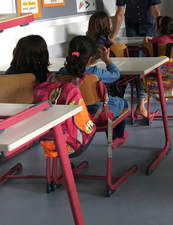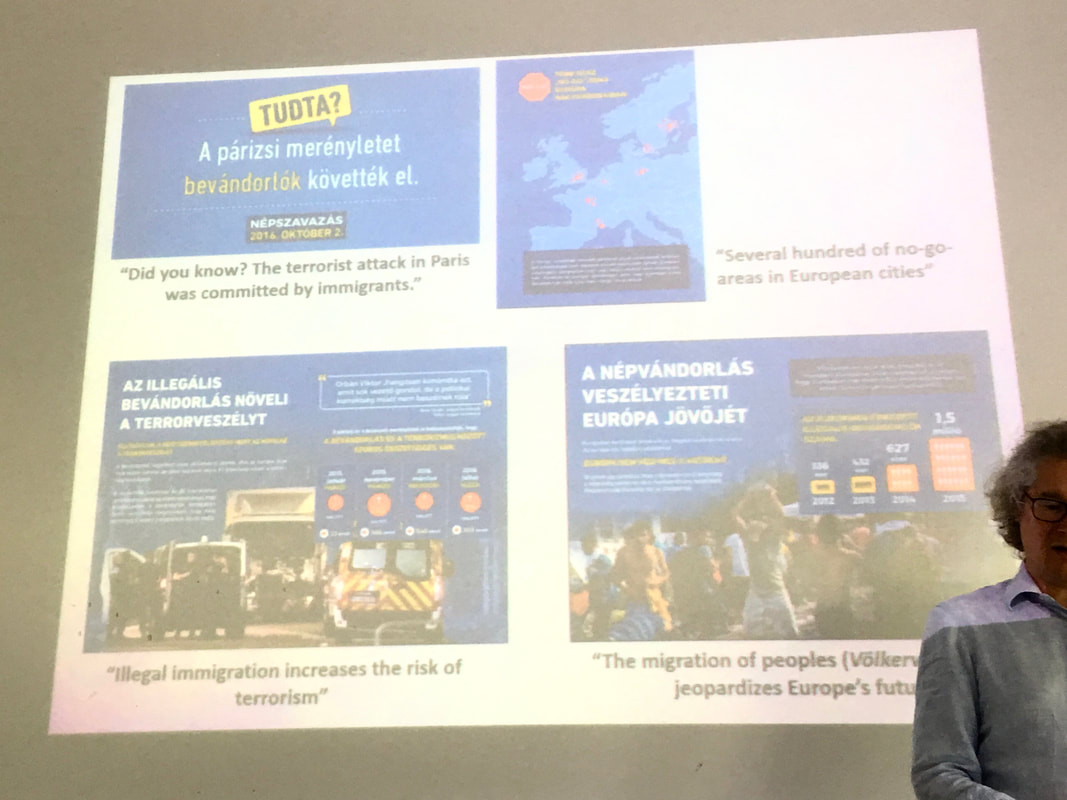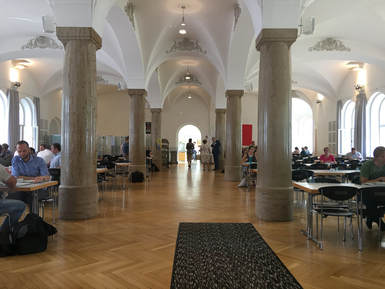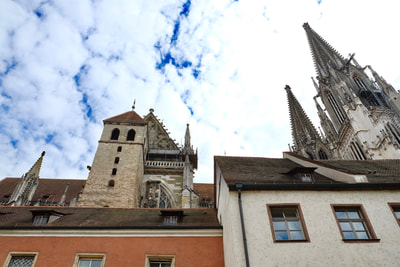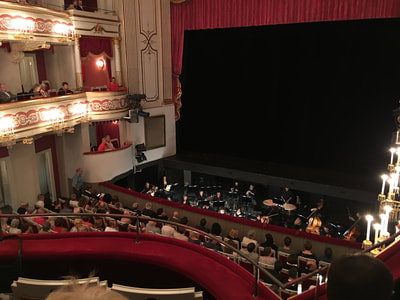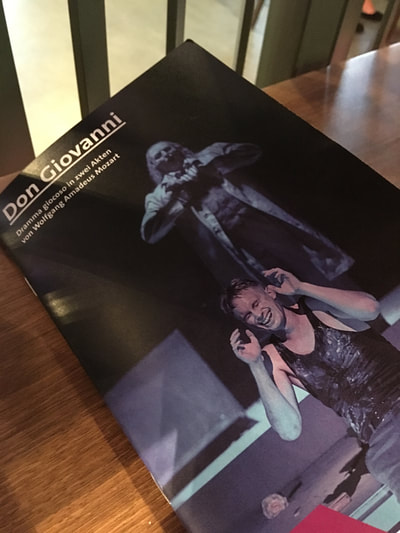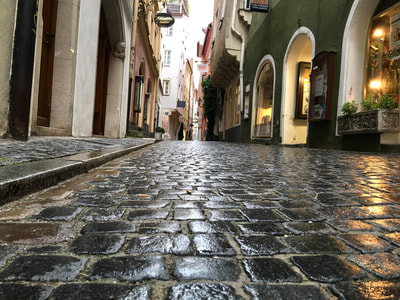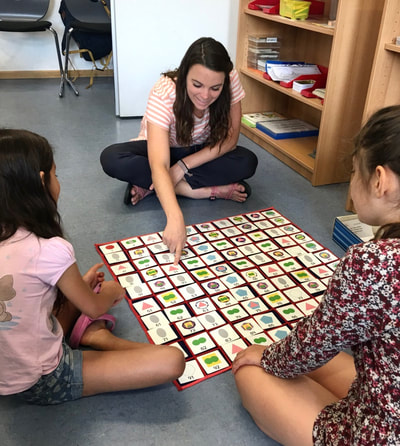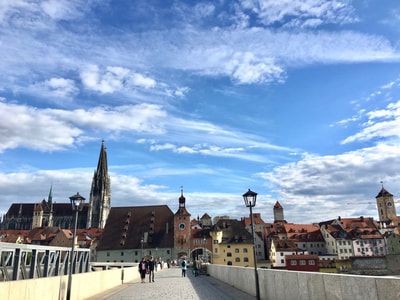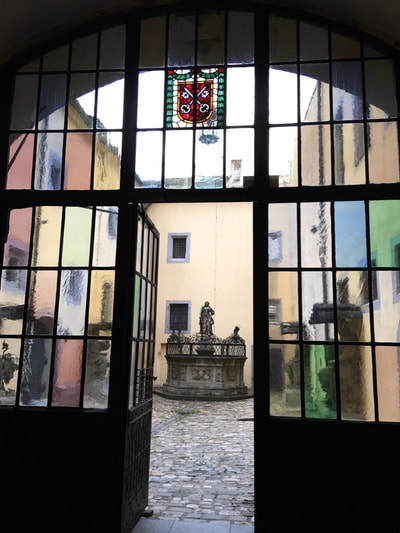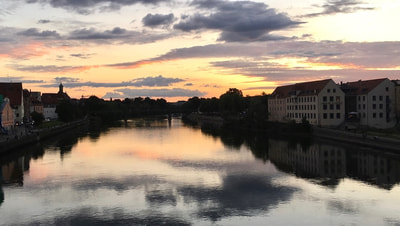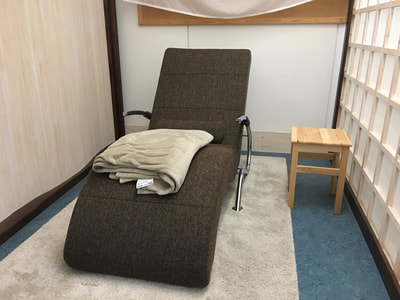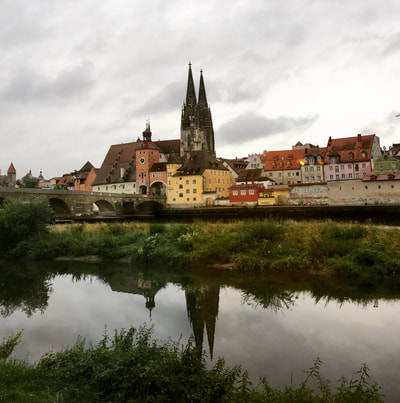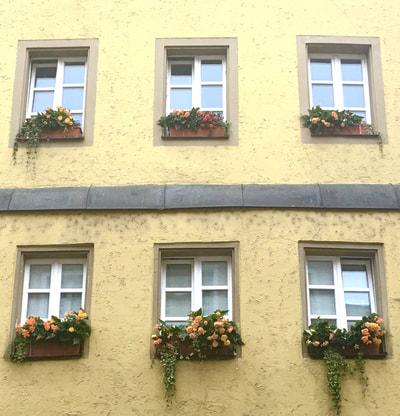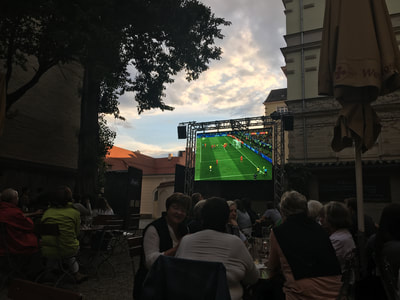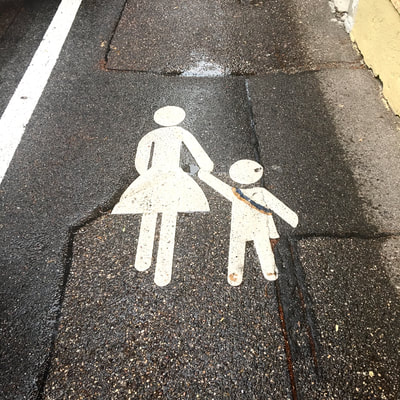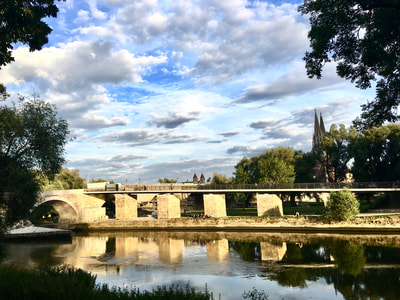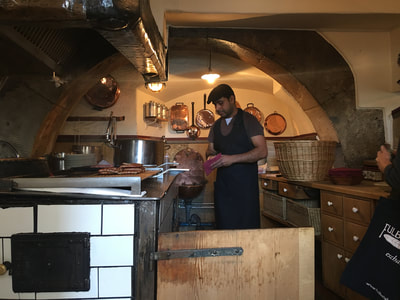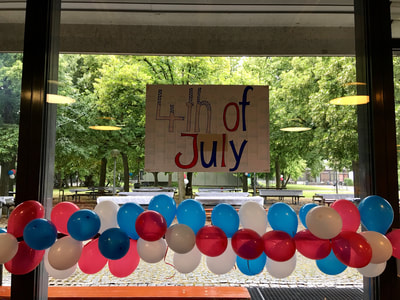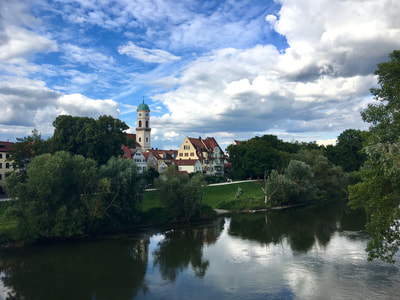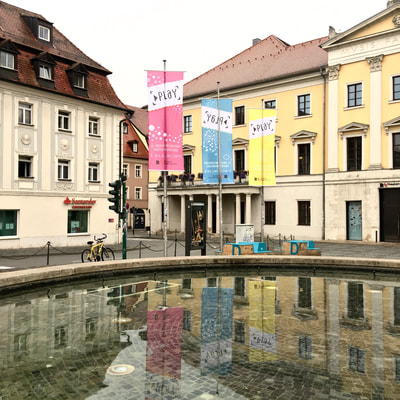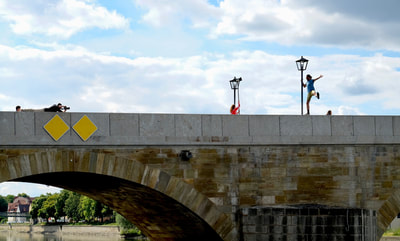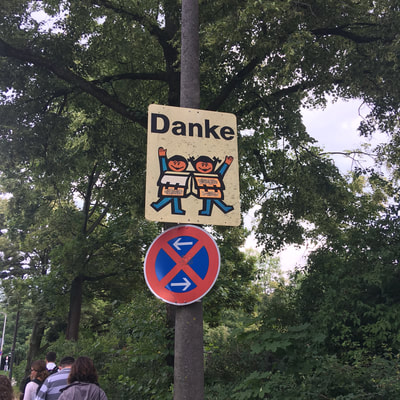*This web page is not an official Fulbright website. The views and information presented are the author's own and do not represent the German Fulbright Commission or Fulbright program.
Education in Germany - Good Practices and New Perspectives
Professional Development Seminar for U.S. Teachers at the University of Regensburg
June 24 - July 7, 2018
June 24 - July 7, 2018
I am always curious about how countries and communities work to educate children. I had limited knowledge of education in Germany prior to this experience, although I had keen interest in learning more about vocational education and how schools have been meeting the needs of nearly half a million children who arrived in the recent years as part of the refugee crisis in the middle east and northern Africa. I am grateful for having this enlightening and inspirational opportunity to gain insight into the educational practices in Germany.
Thank you, German-American Fulbright Commission, for the opportunity to experience German culture and an in-depth study of education in Germany. Thank you, University of Regensburg, for hosting this seminar and planning a relevant, joyful and compelling program. And, thanks to the teachers and students who spent time with us and welcomed us into their lovely schools.
|
Each day of our program offered a piece of the puzzle to the big picture of education in Bavaria. Through lectures, school visits, factory tours, and community experiences, we co-created a mosaic that illustrates how the Bavarian education system is shaped by policy, geography, culture, socio-political factors, migration,language, and foreign policy. You're invited to read about my experiences here.
I've included some reflections on my experiences here. |
Educational exchange can turn nations into people, contributing as no other form of communication can to the humanizing of international relations ~ J. William Fulbright The German-American Fulbright Commission sponsors multiple programs, including this seminar for American teachers which was hosted by the University of Regensberg. Established in 1967, the University offers a comprehensive university experience for approximately 20,000 full time students. 85% of students come from Bavaria and there are around 1,800 international students. 20 - 25% of the students are enrolled in the teacher training program. Part of the holistic education system in Bavaria, university education is tuition-free.
|
Learning about education in Bavaria through school visits
The key component to education in Germany: It's a flexible and multifaceted school system with diverse, permeable pathways Our introduction to Germany education was foundational and provided a road map for our experiences we'd have over the next two weeks. Similar to education in the US, each Germany state structures and funds local education; thus, there are 16 different school systems across the country. Being in Regensburg, our experiences focused on the Bavarian education system which offers nine years of compulsory education. We had the privilege of visiting schools that represent the variable paths available to students although we did not visit a Förderschule, schools for students with special needs. Inclusion is a relevant topic right now in Bavarian schools, especially since 2008 when parents had the right to request inclusion for their children at comprehensive schools.
Our visit to Pestalozzi Grundschule was our first school visit and our introduction to primary education in Bavaria. While early childhood education is not required, it's typical for children to attend pre-school before entering first grade in the year they turn six. In the Grundschule, students are in mixed-ability classes that follow a state-wide curriculum. In the last three years, Pestalozzi, along with schools across the country, introduced transition classes when the first refugee children begin to arrive in 2015 and schools needed to meet the needs of children entering the school with little or no German language skills. These days, the 260 students in this little school represent 25 different nations and 17 languages with 70% of the children having a migration background. Being responsive to the influx of refugee children has been a community-based endeavor, with schools being the epicenter for supporting children. Thus, schools are morphing in diverse ways through differentiation, German language and culture classes, and trauma counseling.
|
Fourth grade serves as the final year of primary school and the transition to secondary school for children across Bavaria. There was a palpable sense that perhaps it's too early for children who are 10 to 11 years old to have to choose an education and career path. We heard from educators, business owners, parents, and students that the decision can, indeed, be very stressful, especially with societal perceptions and of the different levels of schooling. It seems that there is a definite pressure for students to attend college. Yet, we often heard that, developmentally, students aren't always ready for the rigorous, academic program at Gymnasium, and that kids these days feel pressured and stressed out. It was illuminating to learn about three post-secondary options available to students in the context that all paths are open to everyone and pathways are permeable. For example, when visiting a Realschule, I had a conversation with a young woman who transferred there from the Gymnasium because she felt that the experience did not allow for much leisure time and outside of school pursuits. In contrast, her friend transferred from a Mittelschule because, after grade6, she was ready for more of a challenge.
|
|
We visited St. Wolfgang Mittelschule and Otto Schwerdt Mittelschule to learn about one secondary education pathway. In fourth grade, families decide which secondary school their child will attend. The Mittelschule typically offers students an education that prepares them for a career through practical education and training. Students attend the Mittelschule for grades 5 - 10, and attend a particular school with specific career foci like culinary, computers, or woodworking. One interesting dynamic we heard about from various educators is how the Mittelschule is perceived as the 'lowest' education path for students. We also heard, however, how educators are working to re-frame it as another option in the flexible, permeable education system.
|
Otto Schwerdt Mittelschule is unique in that it offers a full-day school experience. Across Bavaria, most students attend school half day, which is why nearly all schools do not have cafeteria facilities. Otto Schwerdt Mittelshule was built specifically to offer all-day programming and has served as a model for the benefits of an extended instructional day. Here we learned that the focus is on scaffolding kids into the world of work with lots of experience and necessary academic background skills. Thus, vocational training begins in 5th grade when students take exploratory classes in carpentry, computer skills, and culinary arts before they choose one of those three areas as a specialty. From 7 - 10 grades, students are participating in vocational experiences in diverse work settings to prepare them for formal vocational education that includes apprenticeships. Students are also able to choose to sixth year that provides more background knowledge, comparable to a Realschule.
|
|
The intention of the Realschule is to prepare students by providing basic skills for personal development and for apprenticeships and later work life. Our visit to Realschule am Judenstein was a rich glimpse into a vibrant school. Here, students choose a course of study from three branches - math, natural sciences, and chemistry; economic sciences and business administration; and intercultural and language studies. Other Realschule offer different programs like music and fine arts, craftsmanship, home economics, and health and socall sciences.
Like the other schools we visited, this school has a diverse student body with 60 nations represented. This has resulted in an emphasis on teaching German as a second language. |
|
I had the privilege of observing and participating in two classes. With a colleague, I visited a 7th grade English class and observed a lesson on US landmarks (i.e. the Statue of Liberty, the Golden Gate Bridge, Yellowstone) and then we were invited to answer some questions the kids had prepared ahead of time. Questions included the following: “What surprised you about Germany?” “ How are American schools different than German schools?” “Are American high schools like what we see on TV and Netflix?” “How do you and your town feel about Donald Trump?” “Do you have weapons or shotguns in your house. These kiddos were bright and curious and I appreciated the opportunity to talk with them, even for just a brief time. I also observed a music class and in which we were able to join in on the beginning guitar lesson. Loved the hands-on, experiential learning I got to experience , and I’m grateful for the small group discussion with two intelligent young students who were open to our questions about their lives and life in Germany.
|
|
The Gymnasium is a college preparatory secondary course that includes rigorous academic studies in preparation for the abitur exam needed for entrance to university. At Carl Friedrich Gauß, fifth grade students begin the academic study of English (English instruction begins in third grade through playful learning.) In 6th - 7th grade, students choose a second foreign language, either French or Latin, and in 8th-9th grade, students choose one of two branches of education" natural sciences or modern and ancient languages. Students may opt to add the Italian language to their studies in 10th grade. Students' qualification phase includes grades 11 and 12 when students study to pass their critical exams. We heard quite a bit about the pressure students in Gymnasium experience, and this school like others offers an abundance of support and experiences to promote a healthy, well-balanced life. For example, they offer tutoring, a program for gifted students, national and international opportunities, performing and visual arts, and electives like mountain biking, wrestling and volleyball.
|
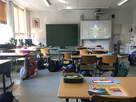
I was thrilled to be invited to teach a lesson to a fifth grade English class. The children were so bright and interactive and I had a wonderful time introducing students to how geographically diverse the United States is. I'm grateful to the class teacher for this joyful opportunity. It was a thrill and honor.
After students finish secondary school, there are many options available to them to prepare them for either university or a career. These options include vocational schools that incorporate apprenticeships to bridge theoretical and practical learning, specialized secondary schools, and university preparatory programs.
|
|
Our group was particularly excited for our visit to a vocational school, and we had a lovely visit to Städtische Berufsschule. After completing Mittelschule or Realschule, students can attend a vocational school like this, so, typically, students begin here at around the age of 15. Students attend school part time while being employed as an apprentice by a local employer. Apprenticeships are part of the fabric of the German work world and young people's passage from full-time schooling to full-time working. Thus, opportunities are advertised and students apply for and are then paid to learn the job on-site and in practical terms and part-time at the vocational school.
|
|
Here at Städtische Berufsschule, instructors include trades people from the professions who additionally trained for a certificate of teaching in addition to university-trained teachers. Here, students can study in programs like constructional engineering, nutrition, culinary, and visual arts. Students can train and study to directly enter a profession or can receive additional education as a means to university. This lovely school is equipped with 24 professional workshops where students practically apply theoretical knowledge from the classroom. We visited workshops in which students learn to be hairdressers and make-up artists. We visited a car shop workshop and carpentry workshops. We saw a workshop that simulates a hotel room for housekeeping posts, and we visited a variety of cooking and baking areas before being treated to a delicious meal prepared by students. There are also courses for migrant students who are placed in vocational schools to learn German, practical living skills, and to train for a job. It was exciting to learn about the plethora of options available to students in addition to spending the morning with a passionate teacher who tirelessly bridges students to international contexts through ERASMUS projects for cross-cultural experiences and work experience.
|
|
Company Tours
|
Unemployment in Regensburg is quite low - 2.3% - and both companies exemplified a vibrant, well-trained workforce. Mr. Aumuller spent time with us at his family's printing company spoke at length of the responsibility and commitment to, "integrating young people into our working world." We were not allowed to take photos at either site, but the tours of each facility were impressive. I realized how small my context is as a classroom teacher. It was exciting to see how people integrate with technology (like robots!) to maximize productivity. It was truly joyful to watch automated production processes with technology I had never seen or had ever imagined like robot scooters that fill and delivery inventory materials traveling along the same path as we humans.
|
|
Visit to Reception Center for Refugees
|
One of the most memorable, powerful experiences we had in Regensburg was our visit to the Reception Center for Refugees. The 2015 refugee crisis is very much part of the story of daily life in Regensburg, and we had opportunities to learn about how schools are responding to migrant children from diverse backgrounds. This experience was made more poignant in light of events here in the US with families being separated at our southern border and children being housed in centers around the country.
Our tour of this facility defied my perceptions of what a refugee 'camp' could be. I appreciated very much how the migrants here are viewed with dignity and to begin to understand the framework and process for migrants seeking asylum in real time. |
|
The most poignant part of our visit was touring the kindergarten classrooms where a group of girls ran towards us. They were students we had met that morning at the Grundschule. In fact, the school's headmaster was with us on our tour, and the girls beamed upon seeing him. I will never forget how the girls situated themselves at desks as he spent some moments talking with them. It was an expression of connection, of that nurturing, respectful teacher-student relationship that is so vital for students' learning and development.
|
Learning in the classroom - presentations and lectures
|
We had the opportunity to learn from a number of experts about a variety of topics that impact life and education in Bavaria. For example, Prof. Dr. Ulf Brunnbauer presented a look at Crisis in Southeastern Europe. I found the contrast between Hungary's and Germany's responses to the refugee crisis to be interesting in addition to the regional Nationalist backlash that pervaded southeastern Europe.
|
Dr. Benedikt Wisniewski presented on "Educational Counseling" and "Inclusive Education" that illuminated how students are supported through school psychologists through crisis intervention, inclusion, bullying prevention, democracy and tolerance and the prevention of radicalism, and support for gifted students. In addition, school psychologists address teacher health and well-being. Benno Jirschik engaged our group in a dialogue to compare and contrast American and Germany education systems through his presentation on "The Higher Education System in Germany/ Bavaria." Prof. Dr. Stephan Bierling discussed "German Foreign Policy in a World of Crises" and presented such compelling information that taught me so very much about the challenges in Europe and worldwide in a decisive climate. His talk helped me to see a larger picture, as an American, of political and economic factors that are interconnected. We - across the world - are interconnected. Finally, Dr. Corinna Handschuh discussed "Multilingualism and the German Education System" through which I gained perspective about the first post-WWII group of migrants from Turkey and, thus, Turkish is the most predominant migrant language in Germany.
My favorite speaker, though, was Angelika Klemenz-Klebl, a German as second language specialist. I am always, always inspired by teachers who are passionate, thoughtful, and optimistic. She has worked with migrant students throughout her career. She described the impact of the 2015 refugees crisis visible in schools when children were quickly coming in high numbers between 2015 - 2016 and schools were making up to two new classes a day at the height of the influx. Ms. Klemenz-Kiebl is practical and compassionate and shared these ideas that resonate with me:
I appreciated the opportunity to be a learner through these intriguing conversations and lectures. My perspective was broadened and my curiosity piqued.
My favorite speaker, though, was Angelika Klemenz-Klebl, a German as second language specialist. I am always, always inspired by teachers who are passionate, thoughtful, and optimistic. She has worked with migrant students throughout her career. She described the impact of the 2015 refugees crisis visible in schools when children were quickly coming in high numbers between 2015 - 2016 and schools were making up to two new classes a day at the height of the influx. Ms. Klemenz-Kiebl is practical and compassionate and shared these ideas that resonate with me:
- Language is a human right
- Teaching with human dignity as a basic principle is vital
- Making the connection between listening, speaking, reading and writing and free speech can be potent
- Our own life-long learning is essential
I appreciated the opportunity to be a learner through these intriguing conversations and lectures. My perspective was broadened and my curiosity piqued.
Teacher professional development
|
On June 27 we traveled to Dillengen on der Danau to visit the Academy for Professional Development of Teachers and Personal Management. This Academy is the professional development (PD) center for the 110,00 teachers across Bavaria. Each year, more than 25,000 come to the Academy which offers a diversity professional learning through 3 - 5 day courses. The campus includes a cafeteria, lounge, housing, and classrooms. The idea is to provide continuous in-service training for teachers and administrators as part of and throughout one's teaching career. Not only is this the only academy of its kind in Bavaria, it's quite unique to most parts of Germany and is considered a state investment to support teachers. While limitd PD might be offered at the school level, most of teacher's PD happens here. There was a positive, relaxed and lively buzz in the air. As the PD Coach at my school, this model is certainly thought-provoking, especially in consideration of teachers choosing their own learning experiences.
|
Beautiful Regensburg and cultural experiences
Being in Regensburg for two weeks was such a treat. The fourth largest city in Bavaria, the Danube runs through this World Heritage City. As a medieval city with over 2,000 years of history, it is an entirely charming city. Here are a few other facts about this gorgeous city:
Here's a gallery of some of my favorite places and experiences during these two weeks.
- most northern part of the Danube River
- population = 165,000/ 7,000 in city center
- Designed as a World Heritage City in 2006
- Industries include automobiles, engineering, biotechnology, breweries and serves as a major port.
Here's a gallery of some of my favorite places and experiences during these two weeks.
